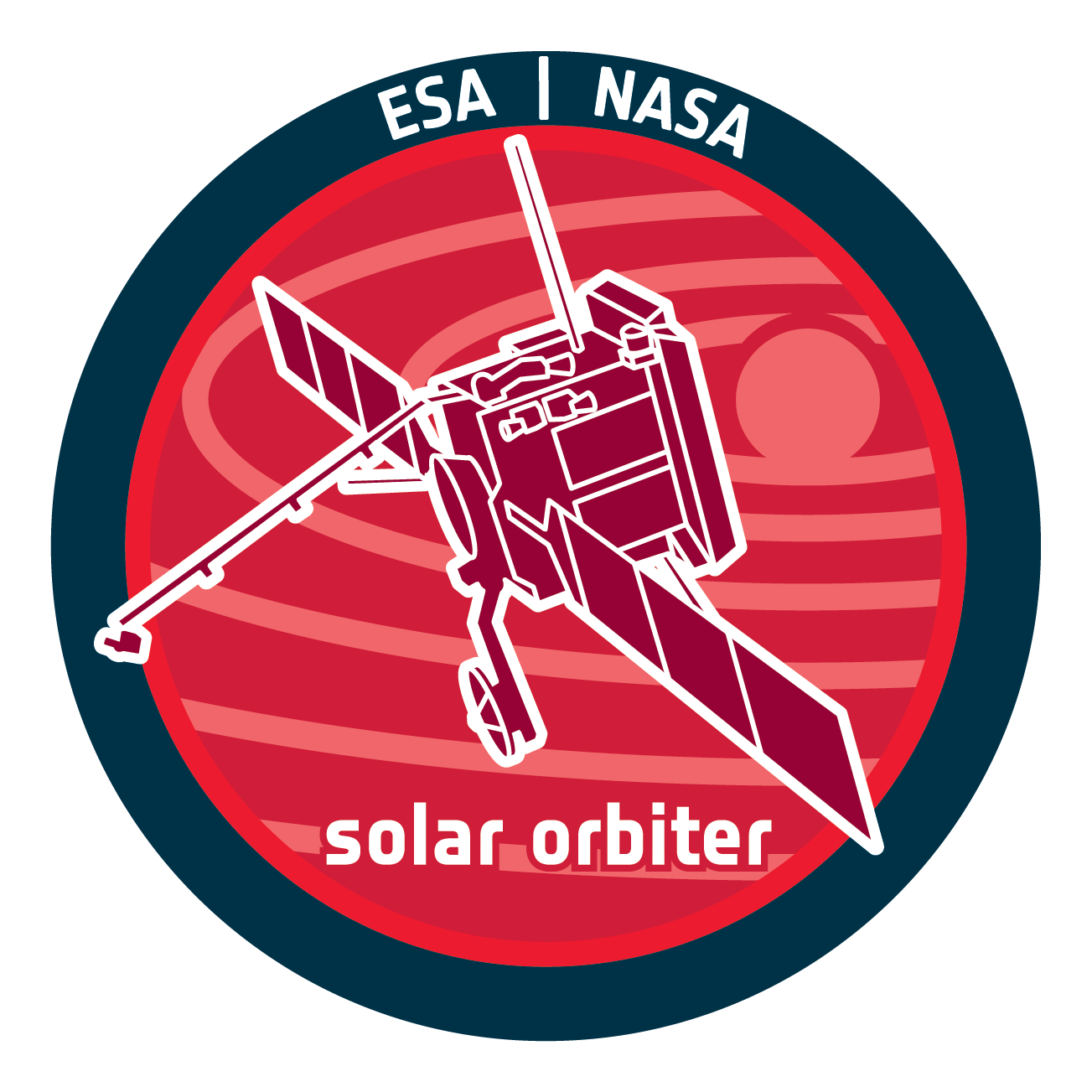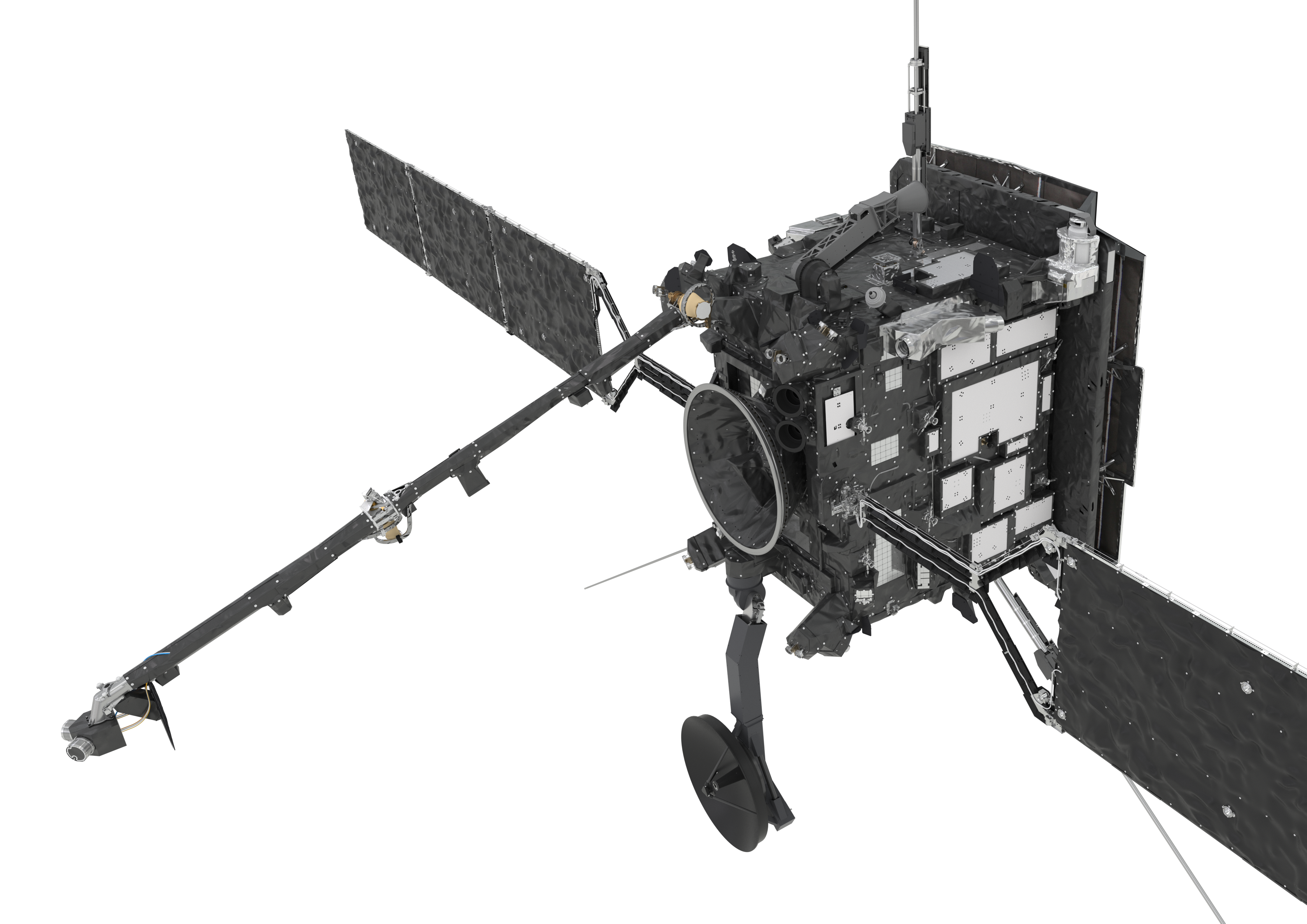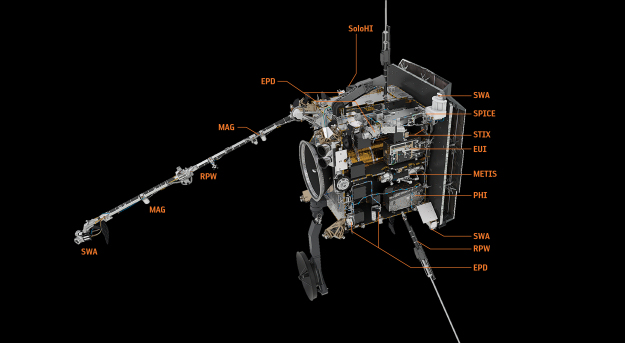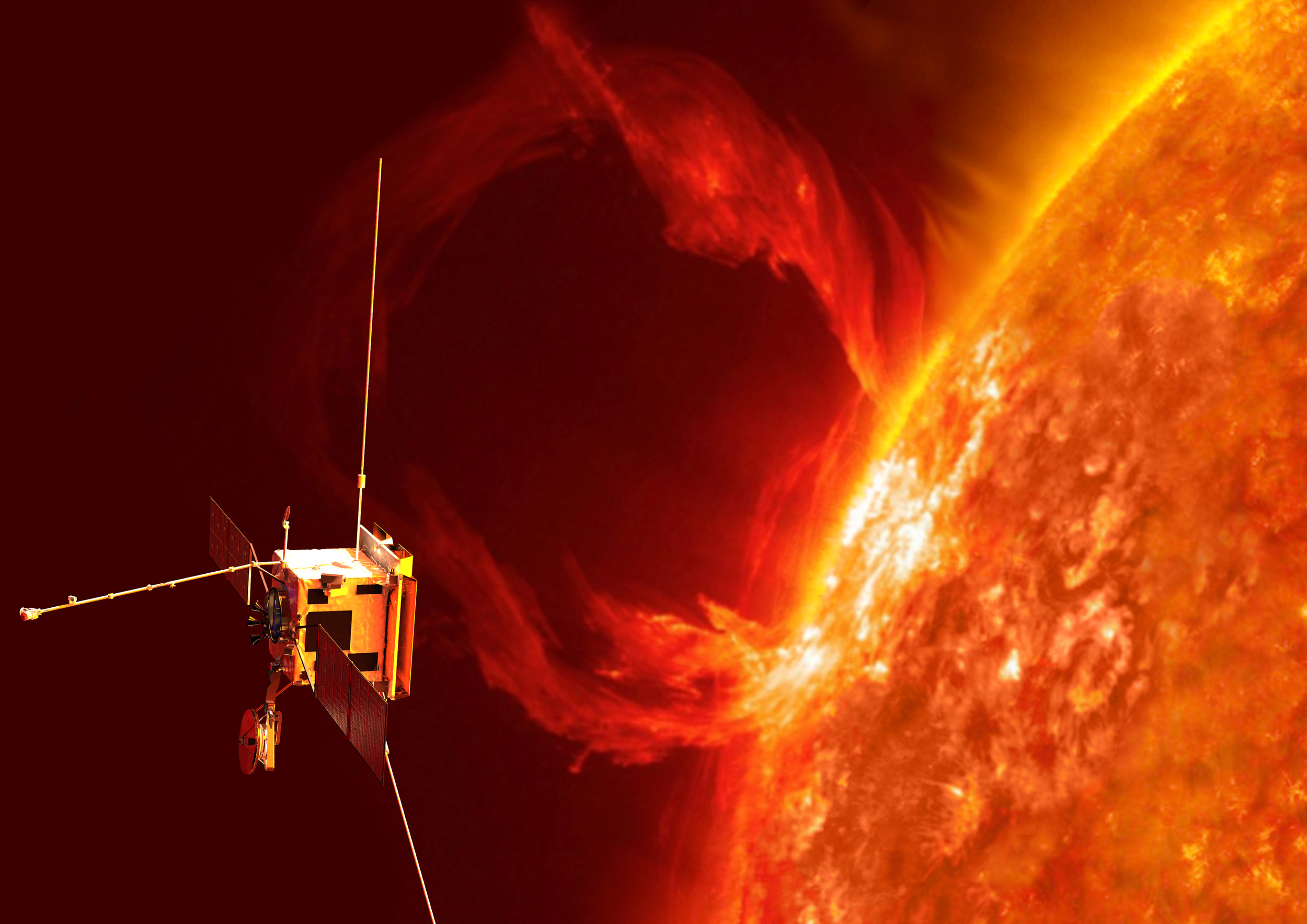Mission
The Solar Orbiter mission is a joint science mission within the ESA Cosmic Vision Program and NASA Living with a Star Program. Solar Orbiter will study the Sun close and from high latitudes, providing the first images of the Sun's poles and investigating the heliosphere. The Solar Orbiter mission is designed to answer the following four fundamental scientific questions about the Sun:
Solar Orbiter will study the Sun close and from high latitudes, providing the first images of the Sun's poles and investigating the heliosphere. The Solar Orbiter mission is designed to answer the following four fundamental scientific questions about the Sun:
- What drives the solar wind and where does the coronal magnetic field originate?
- How do solar transients drive heliospheric variability?
- How do solar eruptions produce energetic particle radiation that fills the heliosphere?
- How does the solar dynamo work and drive connections between the Sun and the heliosphere?
Spacecraft
Solar Orbiter is a three-axis stabilized spacecraft, equipped with instruments for both in-situ measurements and remote-sensing observations from a highly elliptical orbit, approaching the Sun as close as 0.29 AU. After an in-ecliptic phase of perihelion passes, where it is nearly co-rotating with the Sun, Solar Orbiter will change the inclination of its orbit to progressively higher heliospheric latitudes, reaching ~30° by the end of its extended mission.
 |
|
Instruments
The payload complement of Solar Orbiter contains several in-situ sensors as well as remote sensing telescopes and spectrographs.
In-situ instruments
- EPD: Energetic Particle Detector
- MAG: Magnetometer
- RPW: Radio and Plasma Waves
- SWA: Solar Wind Plasma Analyser
Remote-sensing instruments
- EUI: Extreme Ultraviolet Imager
- METIS: Coronagraph
- PHI: Polarimetric and Helioseismic Imager
- SoloHI: Heliospheric Imager
- SPICE: Spectral Imaging of the Coronal Environment
- STIX: X-ray Spectrometer/Telescope

Heat Shield
A specially designed black heatshield will protect the spacecraft and its instruments from the heat of the Sun. The spacecraft has been tested to withstand temperatures up to 500°C. It will endure 13 times the amount of solar heating that satellites in Earth's orbit experience.
Source: ESA Solar Orbiter Factsheet

Bibliography
https://sci.esa.int/web/solar-orbiter
https://sci.esa.int/web/solar-orbiter/-/51217-instruments
https://science.nasa.gov/missions/solar-orbiter/